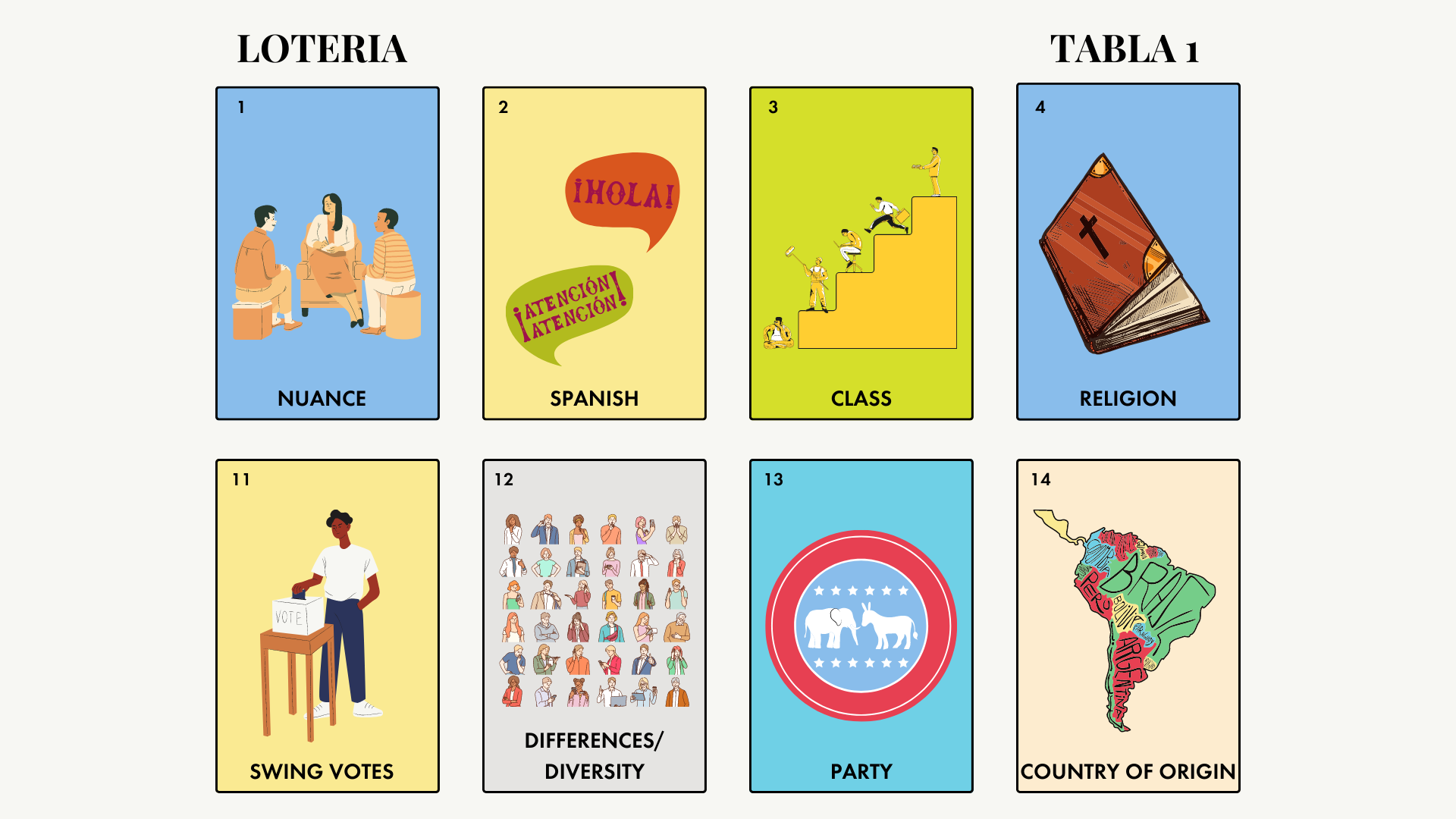¡Lotería! How to check all the boxes with your Latinx election coverage
Credit: Chelsea Naughton, America Amplified
Every election cycle sees themes in news coverage. This time around it seems as if everyone is discussing the importance of the Latino vote. But, how do you go beyond tropes related to that major issue?
Chances are, the tropes are familiar. The Latino vote lotería card goes something like this: nuance, Spanish, class, religion, country of origin, swing votes, differences/diversity, and party. Almost everything written about Latinos and elections falls into one of these categories. Ultimately, these simple themes contribute to confusion and indifference - as if it is just too complicated to truly fathom the Latina/o/e/x story.
How can your media outlet choose to frame your coverage of and engagement with Latino voters? Here are a few tips to help you tell richer election stories for this growing constituency.
Define what ‘Latino community’ is in your area
Is the Latino community in your city place-based, like a neighborhood, or is it a more generalized community? By poring over census and local demographic data, you should be able to figure out relatively easily the neighborhoods where Hispanics live. Once you find that out, you can connect with local homeowner associations, nonprofits, parent-teacher Associations and other community leadership. Through these lenses, Latinx communities are more real and tangible for your reporting. Make sure to explain this approach to your audience, so they understand where and how you’re listening and who you’re talking to.
If the community is more general, you need to go the extra mile to explain your process to staff and audience. Is anyone who tells you they have Latin American ancestry now considered part of the Latino community in your reporting? Is it a social media group you’ve come upon? Is it someone with a Spanish-language derived surname? Be open about your criteria.
Define the people you want to talk to
One of the greatest difficulties in covering Latinos is simultaneously saying the ethnic group is not a monolith while reporting on it like it is (that’s the “differences/diversity” lotería). Thus you may read stories where fourth-generation Mexican-Americans, anti-Castro Cuban refugees and working-class Guatemalans newly here have contrasting needs, but are all piled into a report on Latino voting.
To avoid confusion, think through who constitutes the majority of Hispanics in your area. Again, census, city and state data can offer you clarity. Many Latin American nations have consulates across the U.S. and can help you. In this exercise, you can get to know the real profile of Hispanics in your community and move toward a clearer awareness of their lives.
Lastly, if a majority emerges, you should not feel limited to choosing just one group and reporting on them. In fact, you can make the majorities part of a larger series on Latinos and voting.
Consider your sources, questions and framing thoughtfully
Speaking of mixed messages, journalists can report on the divergent lives of Latinos, while also selecting a few individuals to share their opinions about elections and implicitly representing that experience. One of the more common examples is asking a source what Republicans and Democrats should know about Latinos. With this, we mistakenly frame the source as the person to say what political parties should know about the ethnic group.
Diligent reporting on the Latino vote requires us to reflect on what we’re asking and why. A better question is about this source, their needs, and their interpretation of politics related to those needs. Such an inquiry can offer a deeper look at the priorities of a Latino voter, and may go a long way in helping the audience see sources’ lives and how ethnicities intersect their experiences.
Telling stronger stories about the Latino electorate is badly needed. Many Latino vote narratives are decades old and do not further your organization’s efforts to reach that community. Because Anglo audiences turn to you to understand the world, a simplistic summary such as ‘individuals of [an ethnic background] have opposing interests sometimes’ doesn’t contribute to their comprehension. For Hispanics, journalism can at times be equally confusing or frustrating. The audience has told us that they want high-quality coverage of Latina/o/e/x life, and often cannot find it.
We who listen to our communities can do more. Better journalism is central to trust and the future of local media.
Ernesto Aguilar is the Director of Programming at KQED, a member of America Amplified’s Advisory Board and the author/creator of the OIGO newsletter..


